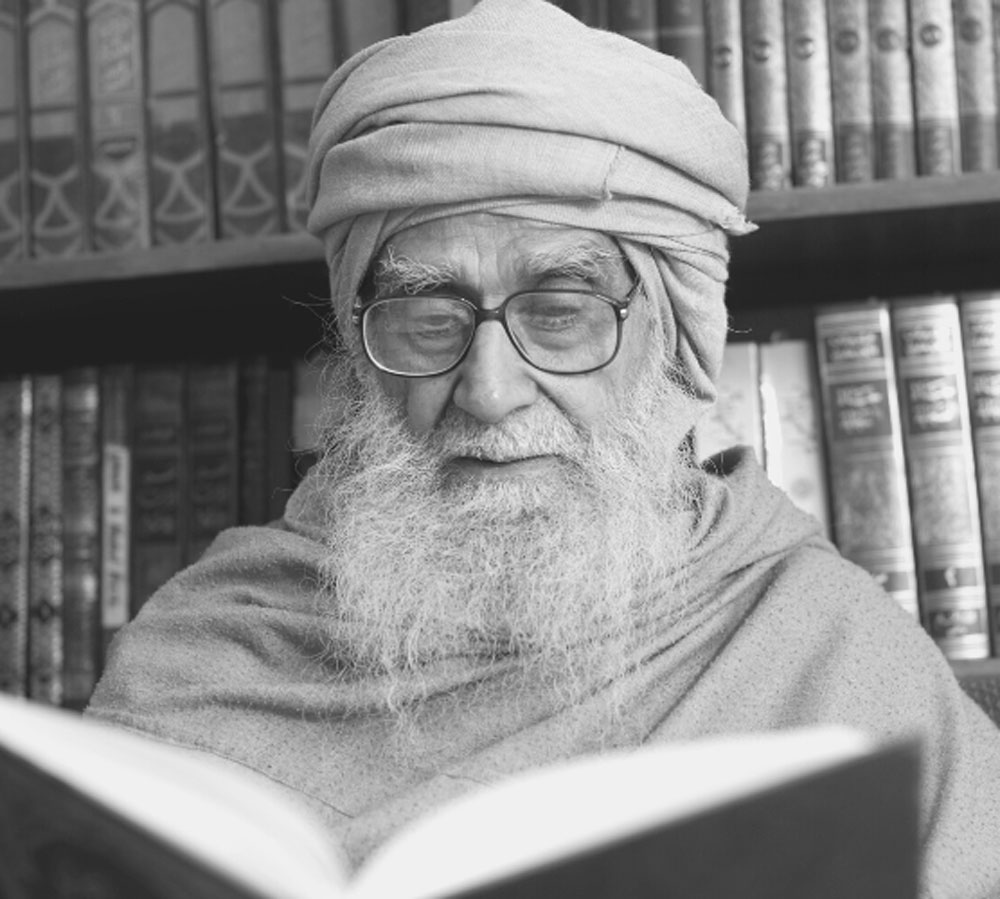A close relative of mine, a Muslim gentleman who lives in a city in the State of Uttar Pradesh in India, had a twenty-four roomed house constructed for himself and his family. Adjoining it was another fairly big house owned by a Hindu contractor, the two being separated by a vacant plot of land. According to my relative this plot belonged to him, but his neighbour claimed that it was his. This naturally led to a dispute. The situation deteriorated to the point where the contractor saw fit to involve the local Jan Sangh elements in what should have been a private matter. When he informed them that a certain Muslim had ‘seized’ his land, they were naturally incensed, and one day their entire group of followers surrounded his house in a great state of agitation, shouting provocative slogans and adopting menacing attitudes. Our Muslim gentleman came out of his office, which was on the ground floor, to find out what could be the matter. He was informed that he, a Muslim, had ‘seized’ a piece of land belonging to their ‘Hindu brother’. Besides saying this, they tried to bait him with a number of provocative remarks. In spite of all this, he showed no signs of anger, but simply asked who their leaders were. Taking only these few into his office, he requested the others to stay outside and assured them that if they would be patient; the matter would soon be settled. It being hot summer weather, he first offered them cold drinks, then began to enquire as to why they had taken it upon themselves to come to him. Their answer was again that their ‘Hindu brother’s land’ had been usurped by him and they insisted that it be restored to its ‘rightful owner’. Remaining very cool and calm, my relative pointed out that since they were all educated people, they must be aware of the fact that all matters relevant to land ownership were put down on paper and that the documents in question would be the best evidence by which to establish whom the land actually belonged to. They all agreed to this on principle. He then very humbly said, “Any papers I have I am handing over to you, and I suggest that any papers in the contractor’s possession also be handed over to you. Please then scrutinize both sets of papers, and I give you my full assurance in advance that whatever judgement you arrive at will be unconditionally accepted by me”.
At this point, the mood of the Jan Sangh’s leaders underwent a remarkable change. Judging by their personal experience, they realized that the picture of this Muslim gentleman as painted by the contractor had been a false one. Up to that point they had been misguided by the contractor’s wild statements, but now they began to hear the voice of their own consciences.
They came out of the office with the papers and requested the crowd to go home, telling them that ‘Mian Sahib’ had left the decision in their hands, and that they would finalize the matter after some ’deliberation’.
The upshot was that after a detailed study of the papers, the boundary dispute was fully settled in favour of the Muslim gentleman. This incident occurred in 1965 and many of the chief characters in this incident are still alive today. If anyone needs confirmation, I can give actual names and addresses of people who can verify this story.
Recently, when the issues of the Babari Mosque (Ayodhya) and Idgah (Mathura), etc. were raised, I was repeatedly reminded of this incident. It occurred to me that if only the Muslim leaders in question had been sincere and serious enough to review the facts objectively, they would have resorted to the same policy in their communal matters as my relative had adopted to solve his own personal problem. They would then have been one hundred per cent successful in the sense that matters would have been amicably settled and there would have been no future recurrence of the problems.
But whenever such untoward incidents take place, unwise Muslim leaders are immediately up in arms, and out to retaliate. The making of emotionally charged speeches and the organizing of processions along the main thoroughfares are the only solutions that their limited intelligence suggests. While this modus operandi may further the cause of their continuing leadership, so far as the solving of the actual problem is concerned, this approach is doomed to being counter-productive. An affair, which, at the outset, is the concern of only a handful of people, when projected into the public arena, becomes a large-scale communal matter. Worse still, it becomes a prestige issue, and at this juncture, even the political leaders hesitate to do anything decisive, whatever little it may have been possible to do before matters escalated to this point. This is because they fear that any revolutionary step on their part may cost them the votes of the affected party at election time.
If, on the contrary, the Muslim leaders had quietly and seriously placed this problem in the hands of well-informed, educated people in high positions or trust and had allowed them to do the decision–making on the basis of an unprejudiced analysis of historical facts, they could, following the example of our Muslim gentleman, have announced that they would unconditionally accept their decision, thereby averting the complications which ensued. But this would have taken forethought. And courage.
The value of taking such a stand is supported by the fact that numerous Hindus have openly condemned the communally minded members of their own community. Many articles have been written by them, which do full justice to the subject. These have appeared in Nai Duniya (Delhi), Tameer-e-Hayat, Lucknow, Naqueeb (Patna) and in other Muslim papers and are on record in the newspaper files of 1986.
An excellent examples of such a fair-minded and just letter, bearing the signatures of twelve eminent, highly educated people, eleven of who are Hindus, is printed below.
Sir,–We have noted with growing concern a recent tendency in The Times of India to give a communal twist to news items and even to editorial comments. An example of this is a report from Mathura dated 15 September and entitled, “Krishna’s Birthplace after Aurangzeb.” It evoked considerable correspondence, some of which, as could be expected, was markedly communal in tone.
Your readers should know that historical analysis and interpretations involve more than a mere listing of dates with an eye to pious sentiments. The Dera Keshava Raj temple was built by Raja Bir Singh Deo Bundela during Jahangir’s reign. This large temple soon became extremely popular and acquired considerable wealth. Aurangzeb had this temple destroyed, took the wealth as booty and built an Idgah on the site. His actions might have been politically motivated as well, for at the time when the temple was destroyed he faced problems with the Bundelas as well as Jat rebellions in the Mathura region. It should be remembered that many Hindu temples were untouched during Aurangzeb’s reign and even some new ones built. Indeed, what is really required is an investigation into the theory that both the Dera Keshava Rai temple and the ldgah were built on the site of a Buddhist monastery, which appears to have been destroyed.
Your news report also gives credence to the suggestion that this site was the birthplace of Krishna. This is extraordinary to say the least, when even the historicity of the personality is in question. It creates the kind of confusion such as has been created, probably deliberately, over the question of the birthplace of Rama in the matter of Rama-janam-bhumi. A Persian text of the mid nineteenth century states that the Babari mosque was adjacent to the Sita-ka-rasoi-ghar and was known as the Rasoi Sita mosque and adjoined the area associated with the birthplace of Rama. It would be worth enquiring whether there is reliable historical evidence of a period prior to the nineteenth century for this association of a precise location for the birthplace of Rama. Furthermore such disputes as there were between Hindus and Muslims in this area up to the nineteenth century were not over the Babari mosque but the totally different site of Hanuman-baithak.
It cannot be denied that acts of intolerance have been committed in India by followers of all religions. But these acts have to be understood in their context. It is a debasement of history to distort these events for present day communal propaganda.
The statement in your news report that the site at Mathura is to be “liberated” and handed, over to the “rightful owners” as the birthplace of Krishna raises the question of the limits to the logic of restoration of religious sites (and this includes the demand for the restoration to worshippers of disused mosques now under the care of the Archaeological Survey of India). How far back do we go? Can we push this to the restoration of Buddhist and Jaina monuments destroyed by Hindus? Or of pre-Hindus animist shrines?










